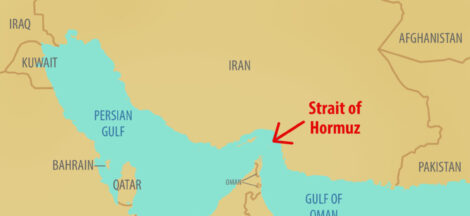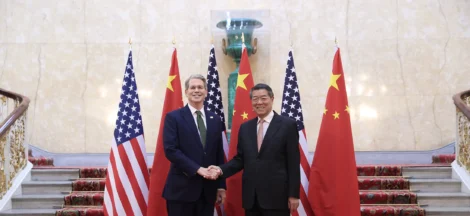By Papri Sri Raman
Ruskin Bond’s short poem Lost All My Money brings home the point in a new book, India’s Long Walk Home. The point being, we are all the ‘Nowhere People’ with nothing. It reminds us of Rekha Bhardwaj’s song, O Re Bidesiya in the Hotstar film 1232 Kms.
And the harsh fact is that we are all outsiders in our own country.
As images of bodies floating down our holiest river, the Ganga, go viral, the Supreme Court advisory on 13 May 2021 to the Delhi, UP and Haryana governments to provide dry rations to all ‘stranded migrant workers’, becomes difficult to understand. The court told these governments that in relief entitlement, no ID proof can be sought.
Is it not too little, too late? What about the rest of the ‘one nation’?
Vinod Kapri’s film is about seven men and their bicycles, travelling home in Bihar from NCR industrial hotspot Ghaziabad, on the outskirts of the nation’s capital city. The documentary, released on the OTT platform in February, received a tepid response. Perhaps the fist lockdown in March 2020 and the effects of Covid-19 then had already begun to fade from the public consciousness. It was the past.
There was, however, no imagination of the future – no clue from the government or health experts or the media that two months later Covid-19 would be back and we would again become ‘outsiders’; this time outsiders to society so that bodies are thrown into rivers; outsiders of the ‘system’ so we are scuttling for oxygen; outsider in our own country so that again we put on our hawai chappals and again become ‘migrant labour’ who cannot get assistance without a local ID.
It is no secret that ID-specific entitlement is located in place-specific identification. This deprives millions not only of entitlements at places of work-residence, it deprives millions of medicare and also the voting right because they have migrated for work.
Published by Authors Upfront-Paranjoy, India’s Long Walk Home is a compilation of articles and poems that begins with Ashok Vajpayi saying, No, We Won’t Be Able To Write Our Time – the stilled and deserted time. True, today’s story remains undocumented. Ruskin Bond just talks about a road, an open road and Arundhati Roy goes back in time to 2010 and a displacement to beautify a city.
Mridula Garg pinpoints the ‘push-factor’ that results in the ‘migrant’ worker phenomenon, putting millions out of the entitlement zone and out of the election system. A 20-year old census puts India’s migrants at 314 million, the number would have crossed 400 million by now. Media reports say at least 7 million people moved into Haridwar for the Kumbh Mela and the UP panchayat elections saw several million migrant workers from Delhi move back to their villages to vote. Not all migrants find employment just 200 kms from ‘home’. They don’t vote and are the nowhere people wherever they are.
India’s migrant story is, however, continually upgrading. The April 2021 report of the Centre for Monitoring Indian Economy (CMIE) estimates about a 100 million job losses in this one year. The CMIE predicts that as much as thirty per cent jobs in all sectors could be lost by end of 2021, just six months away. And about 10 million people have returned to their farms, or as agricultural labour in the same time. Thus we come to Ruskin Bond’s poem:
I’ve lost all my money
And I’m on my way home.
Home to the hills and a field of rock.
Nothing in the city but a sickness of the soul,
Nothing to earn but sorrow….
But most poignant is perhaps Aditi Roy Ghatak with her ‘The Nowhere People’. Paranjoy Guha Thakurata’s Why We Should Hang Our Heads In Shame draws parallels, surprisingly, with the 1943-44 Bengal Famine.
This brings to mind stories of migration we have inherited. The Buddhist Jataka tales which first record Rama’s story have no wars. It’s a journey from Varanasi to the Himalayas. The later story of Rama’s journey from Ayodhya to Lanka is actually a travelogue, through hinterland India. In the film 1232 Kms, the scene where the cyclist labourers are told to go to the river and cross over by boat reminds us of Nishad leader Guha helping Rama to cross over to the South. Agastya’s crossing the Vindhya is also a story of a long walk.
Writing in a little Bengali book published in 1944, Syama Prasad Mookerjee describes the politics of the British ‘scorched earth’ policy and reminds the reader of Bankim Chandra Chattopadhyay’s Anandamath, the bureaucrat-writer’s account of the Bengal famine of 1770 and the consequent disruption to life.
Guha Thakurata also recalls the huge migration that took place at the time of partition of India in 1947. Missing in all this discourse is the long march Indian origin people took, walking from Myanmar across the Arakan hills into Assam I 1945, during the Japanese assault – a story told by the Assamees writer Debendranath Acharya. So, India has a more than myth,-historical memory of unprecedented internal migrations.
Guha Thakurata asks, ‘What prevented the government from asking the defence services to distribute dry and cooked food to the migrant workers and their families also help them travel towards their destinations?’
Of course, India has experience of distributing emergency cooked food and dry rations in the aftermath of the 2004 tsunami, when millions of displaced coastal people were being provided relief by temples, Ramakrishna Mission, Aurobindo Ashram, Amritanadamayi’s organisations, Christian and Muslim religious bodies, NGOs and the armed forces all coordinating. It is from there that the disaster protocol in this country evolved. The National Disaster Management Authority is equipped to enlist the armed forces’ help whenever needed for all kinds of rescue and relief. One can only say for the government, the March-April 2020 migration was not considered a ‘disaster’, Covid-19 was not a disaster. The April 2021 second wave of Covid -19 is also not a disaster. (IPA Service)



